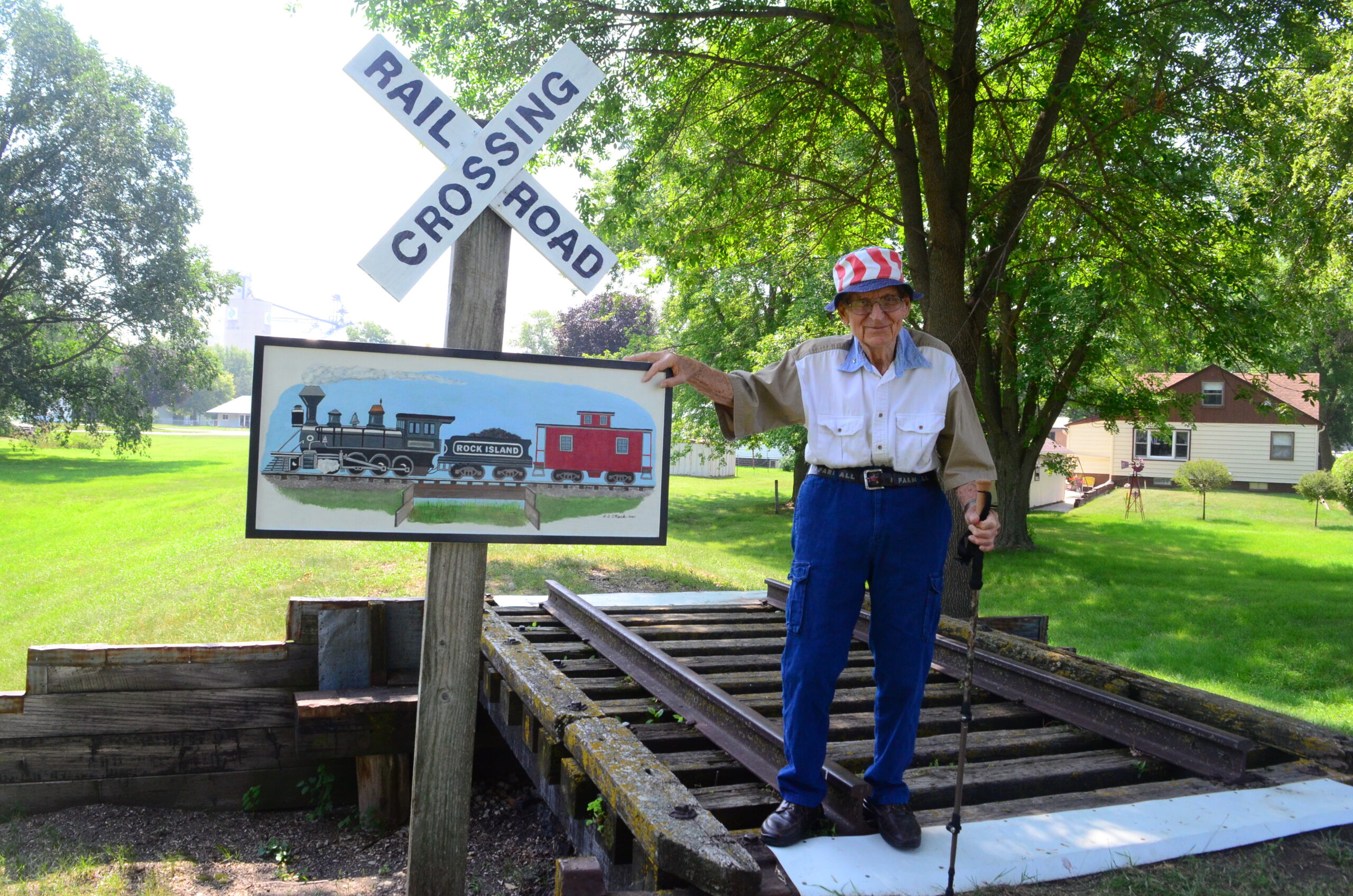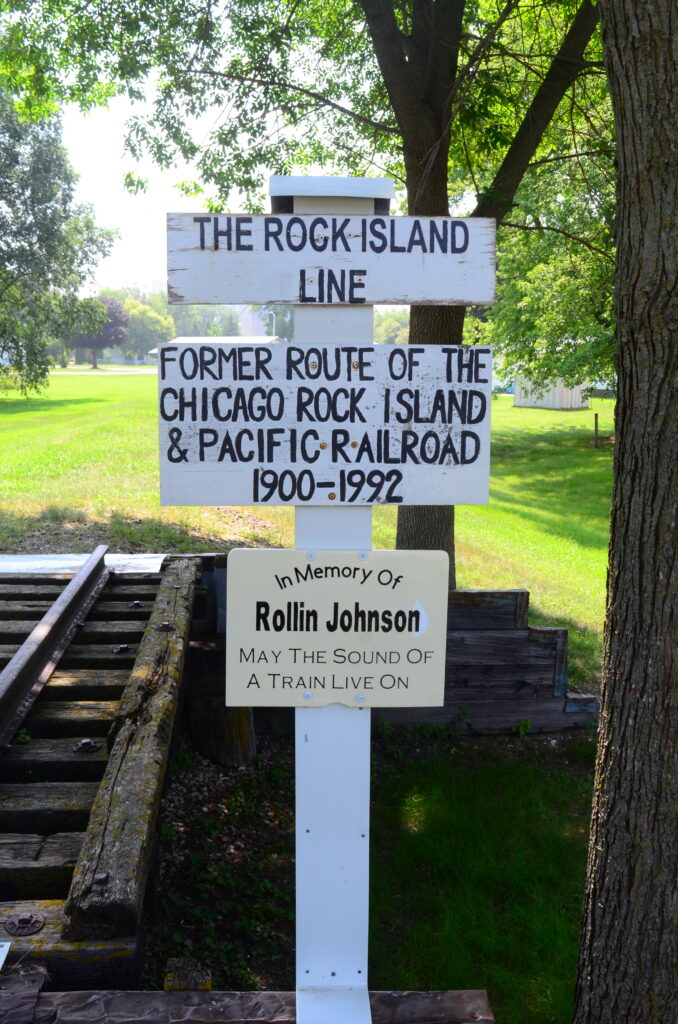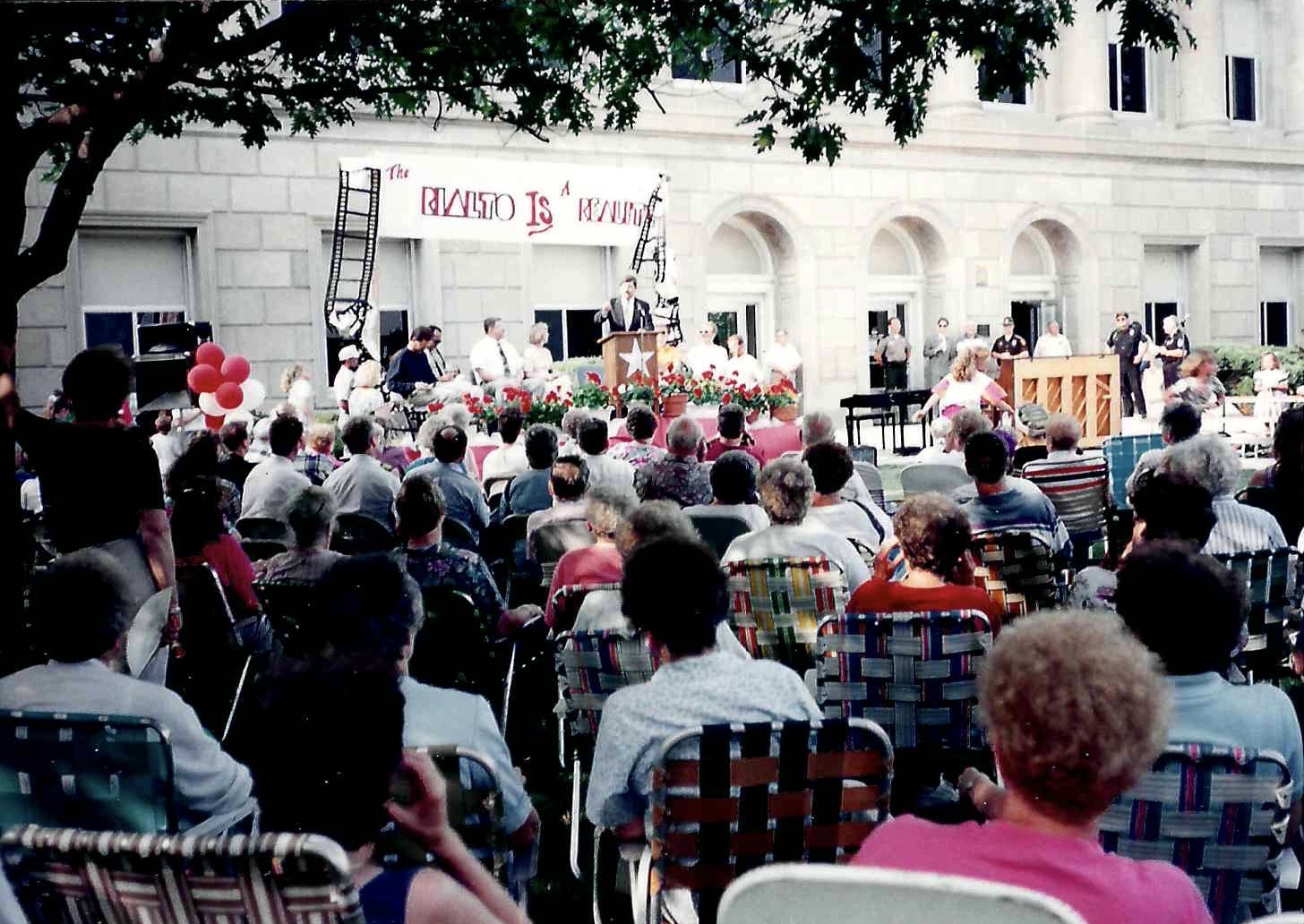
Hidden Gem: Rock Island Railroad Memorial Site
This story originally appeared in the Record-Democrat as the story, “Bartosh makes improvements to homemade historical marker.”
By Erin Sommers; pokyrdnews@gmail.com
Nearly two decades ago, Rollin Johnson and Jim Bartosh created a memorial to the Rock Island train line that ran through Pocahontas for 92 years.
This summer, Bartosh has spruced up the site, which originally featured a train trestle and metal tracks, a railroad crossing sign, a handle to set a boxcar brake and the type of hammer used to drive stakes into the ground from the east to west coasts. New to the site is a painting by local artist Bill Strack that depicts an engine, a coal car and a caboose.

The trestle and historical markers are on NW 4th Street, on the east side of the street.
“We can’t bring a train back, but we can bring back a picture of the train,” Bartosh said.
He and his wife, Shirley, lived with the train line in their back yard for years. It was never terribly loud, Bartosh said, because the train was always going pretty slow as it made its way through town. They did have a bit of excitement in the late 1980s though.
“They did derail two hopper cars of beans in our yard, right before they closed it,” Bartosh said. “Something got that one car off the rail.”
Many of the signs that the railroad once crossed through town are gone, Bartosh said. From the train trestle in his back yard, a visitor can see a house built in what was once the track in one direction, and trees growing in the former track in the other direction.
Bartosh and Johnson weren’t quite ready to let every sign of the railroad go, though. Johnson, whose home wasn’t too far from Bartosh’s, approached Bartosh in the early 2000s to ask about preserving the built-up track in the yard. Bartosh liked the idea. It was the only spot in town where the Rock Island line was still visible, a 2004 Record-Democrat article said.

It took about 15 months to restore the trestle there. Bartosh provided timber to hold up some signs, while Byron Poduska contributed rail spikes he had saved after the railroad closed the line in Pocahontas.
“I was happy that he wanted to do it,” Bartosh said. ‘I never hesitated for a moment.”
Bartosh, who grew up on a farm about 4 miles outside of Pocahontas, said he didn’t grow up watching the trains run through town. He did have connections to the train system in Iowa, though. When he was a young child, in the 1940s, his father would drive him and his sisters to Emmetsburg, where they’d catch a train to Charles City. The children would take the train and visit their grandparents there, Bartosh said.
“I’ve always been amazed by the size of them,” he said.
He lamented the loss of passenger trains in the U.S. Those trains could take Iowans all across the state, and to destinations much farther away, when he was growing up.
“I think we lost something very important when we lost that,” Bartosh said.


